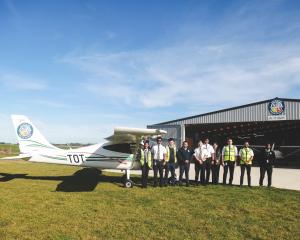
Those are the names of the two new traditional carvings at the marae’s gateway, a project which bought carvers from across New Zealand to Waitaki.
The entrance posts, called pou, were unveiled at sunrise on Saturday.
The ceremony featured waiata, karakia, poetry and a haka.
In January, master carver Chris Gerretzen travelled to Waitaki to design the pou alongside a group of artists from Te Wānanga o Raukawa, a Māori tertiary-education provider in Ōtaki.
The carving took about two weeks to complete.
Marae chairwoman Nicola Neal said the pou were a visible reminder of what it is to be Māori.
They would act as guardians to all who entered the marae and help guide them.
Māori wanted to be an active part of the community and the pou were a way of displaying that.
"We need to show people what we’re doing", she said.
"I’m so proud of our community."
Guests lined up in France St at 6.30am for the unveiling, before being invited inside for breakfast.
Te Whare Koa Marae is a marae of the four winds, established in 1981 for Māori living away from their home.
It acts as a place for Māori of all iwi to connect.
Nicola Bartlett, of Te Whare Mahana ki Manahuna, in Twizel, said the pou helped continue the relationship between Māori in Waitaki and around New Zealand.
Her father was part of the early four winds movement, under which national marae were established.
She believed he would have been proud to see how far it had come.
The pou were a representation of the past, but also a testament to the future, she said.
Māori faced many challenges today, such as discrimination, and it was great to see such bold and meaningful figures established representing Māori in public.
"That’s why our pou are important."
Kotahitanga, the left pou, represents the masculine while Manaakitanga on the right represents the feminine. Together they portray harmony.
Te Whare Koa Marae secretary and carver Sophia Leon de la Barra said pou were typically named after ancestors, but for the four winds marae it was fitting to name them after social concepts.
Kotahitanga means unity and solidarity and Manaakitanga means hospitality and kindness.
Their long tongues symbolise the sharing of Mātauranga (Māori knowledge) and the whales teeth at the bottom of the pou symbolise the bond between humans and their surroundings.
It also represents the concept of sharing among tribes, as beached whales would bring people together to feast and gather resources.











